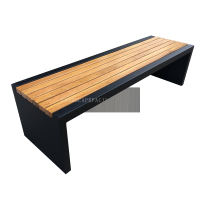Welcome to the website for landscape facilities products and knowledge.
How does the table’s design facilitate easy integration with digital twins?
The integration between physical tables and their digital counterparts represents a crucial advancement in industrial digitalization. Modern table designs incorporate standardized data protocols that allow for continuous information exchange with digital twins. These tables feature embedded sensors and IoT connectivity points that capture real-time operational data, which is then structured into uniform formats for immediate processing by twin simulation platforms.
A key design aspect involves the implementation of universal communication interfaces that serve as bridges between physical table components and virtual models. These interfaces transform mechanical movements, pressure readings, and thermal data into digital signals that maintain data fidelity throughout the transfer process. The table's structural configuration includes modular components with unique digital identifiers, enabling precise mapping within the virtual environment.
Furthermore, table designs now prioritize data interoperability through industry-standard APIs and middleware solutions. This approach eliminates compatibility barriers between physical equipment and digital twin software, allowing for bidirectional data flow. The tables continuously stream performance metrics to their digital twins while simultaneously receiving operational adjustments from the virtual models, creating a closed-loop optimization system.
Manufacturers have developed specialized connection ports and wireless transmission modules specifically for digital twin synchronization. These components ensure minimal latency during data exchange while maintaining security protocols. The physical layout of these tables also considers cable management and sensor placement to prevent interference with data collection processes, thereby enhancing the accuracy of digital representations.
Advanced table designs incorporate edge computing capabilities that preprocess data before transmission to digital twins. This distributed computing approach reduces the computational load on central systems while enabling faster response times. The tables essentially function as intelligent nodes within larger digital ecosystems, contributing to more comprehensive and responsive virtual representations that mirror physical reality with unprecedented accuracy.
Related search:

Recommendation
Modern Stainless Steel Begonia Wood Park Chair Outdoor Courtyard Leisure Sun Protection Bench Long Seat